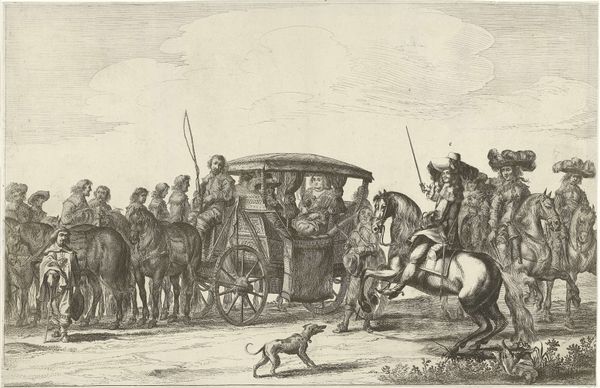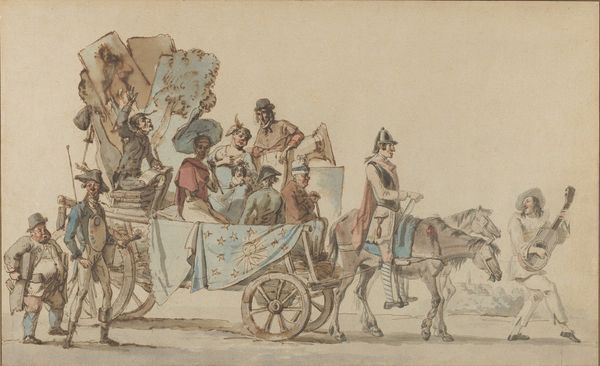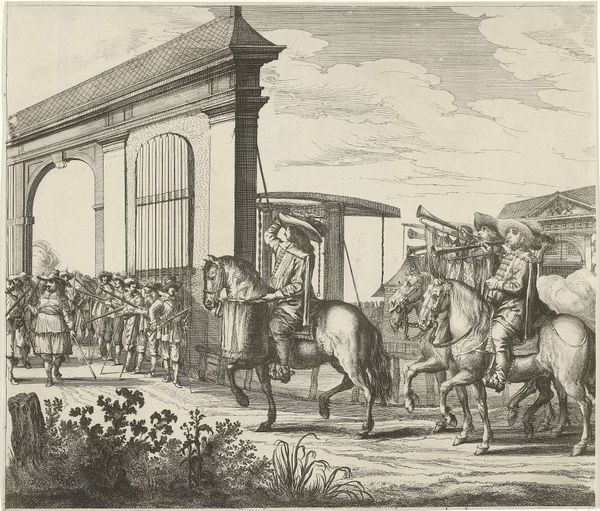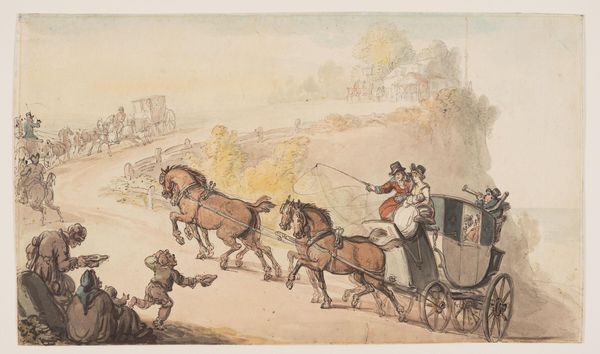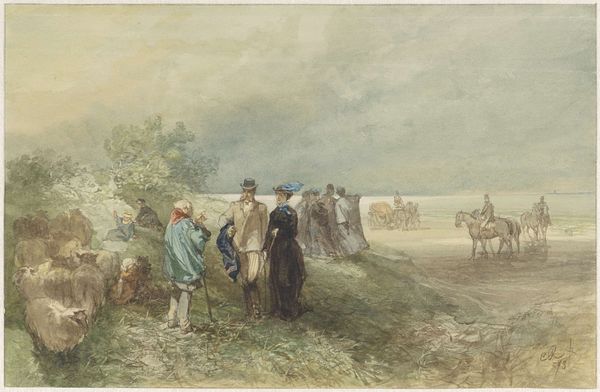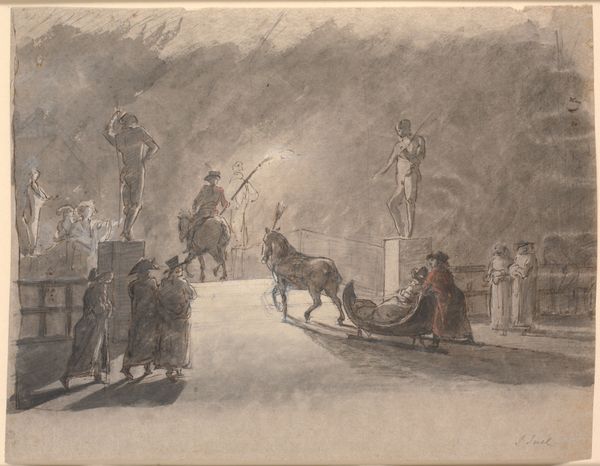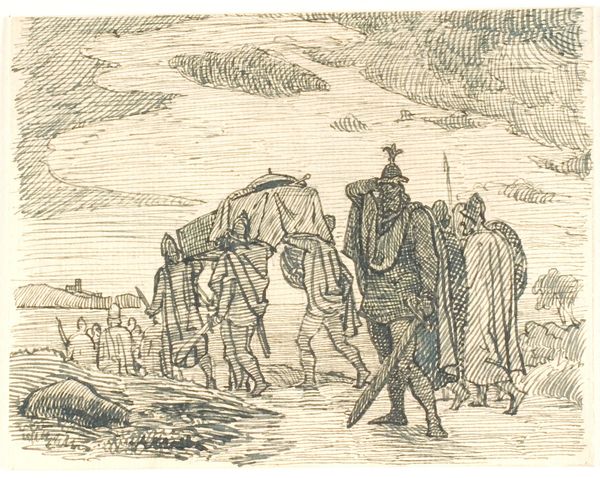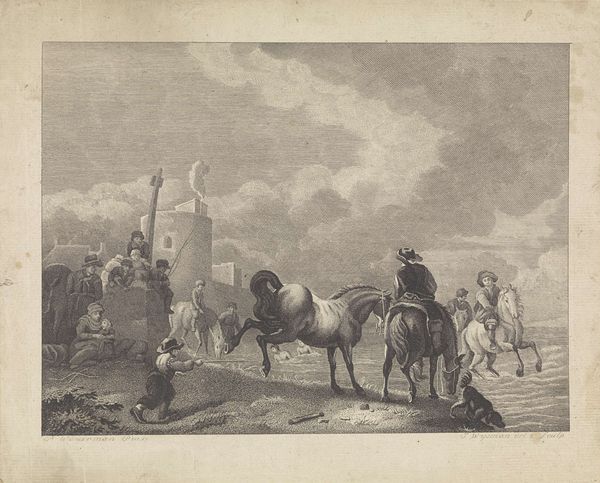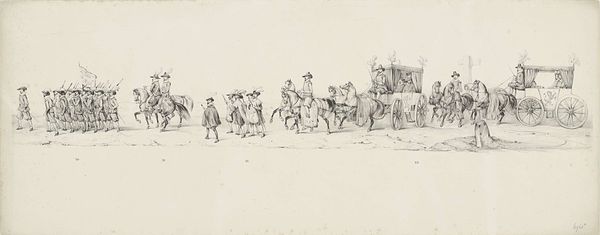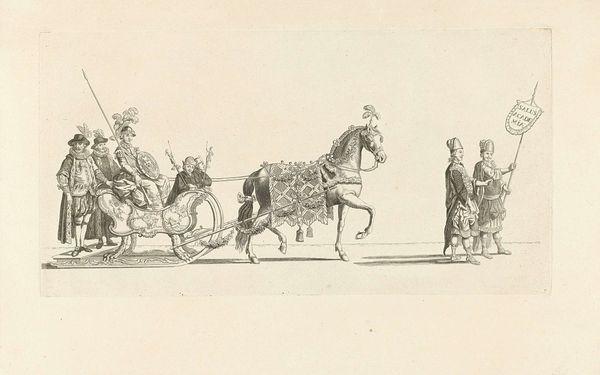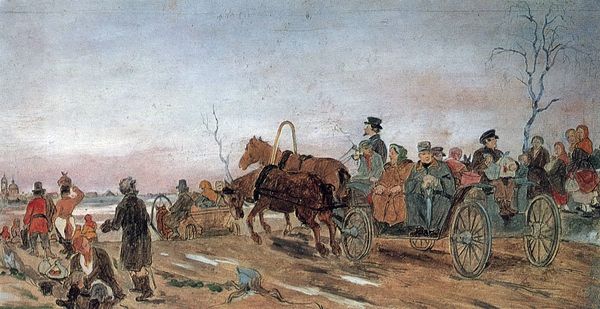
Dimensions: height 319 mm, width 640 mm
Copyright: Rijks Museum: Open Domain
Editor: So, this is "Marktplaats met Romeinen en Batavieren," or "Marketplace with Romans and Batavians" by Charles Rochussen, from 1889. It's a mixed-media painting combining tempera and watercolor, currently residing in the Rijksmuseum. It has a kind of... subdued, almost dreamlike quality, given the pale colors. I am interested in this composition. How do you interpret this scene? Curator: I see a rich tapestry woven from symbols of power, negotiation, and cultural exchange. Look at the central monument—the figure on the pillar strikes a pose of authority and control. The imagery surrounding the monument seems classical but vaguely rendered. How do these blurred edges inform your understanding of historical narrative versus imagined heritage? Editor: That's interesting. It does seem like a romanticized view. It’s like the artist is trying to depict the grand scale of the moment while imbuing it with a soft glow of the past. What about the people themselves, and the fact that there are Batavians alongside Romans? Curator: The marketplace itself becomes a potent symbol of interaction – sometimes peaceful trade, sometimes uneasy truce, often subjugation. Observe how Rochussen distinguishes the Roman figures, arrayed to the right of the frame, from the figures arrayed closer to the center: he wants us to feel there are two "cultures". Can you discern a narrative suggested through their postures and arrangement? Editor: I see the Batavians seem more rustic, and weary almost, in contrast to the more orderly, noble looking Romans. Curator: Precisely. The use of contrasting archetypes echoes the established hierarchies and assumptions from Rochussen’s time regarding "civilization" and the "indigenous," subtly perpetuated through familiar visual tropes. Consider the dog – a lone figure observing the central procession; what could the presence of that singular animal suggest to a 19th century Dutch audience? Editor: Hmmm, maybe a kind of detached commentary or a symbol of untamed nature amid societal structures? That's fascinating to consider! Curator: Indeed! Recognizing how artists mobilize symbols and figures illuminates the enduring power of images to both reflect and shape our perceptions of history and cultural memory. Editor: Thanks, I never considered the symbolism that deeply! I am keen to reflect on this further!
Comments
No comments
Be the first to comment and join the conversation on the ultimate creative platform.
